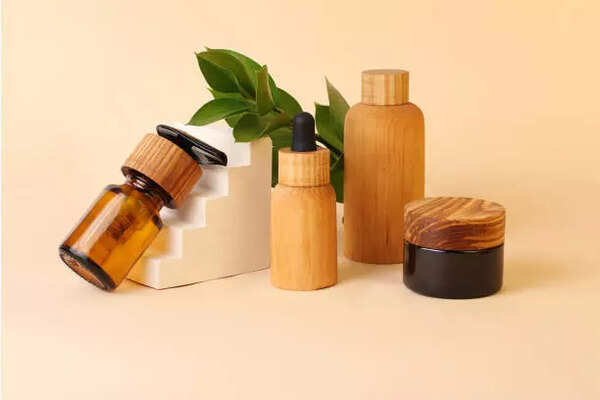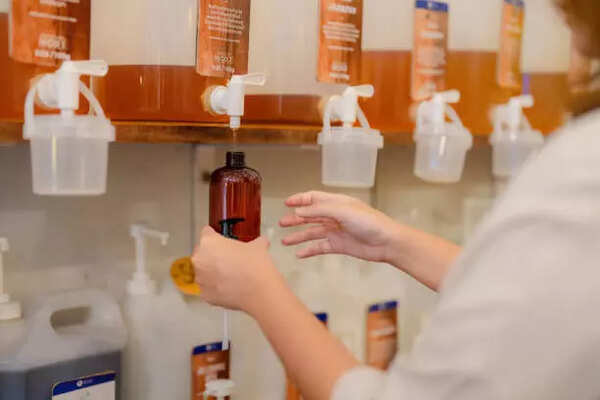World Environment Day: 7 ways to reduce your carbon footprint when buying beauty products
June 4, 2025
Beauty may be skin deep, but its impact on the planet goes far beyond that. From plastic-heavy packaging to harmful production processes and long transportation chains, the beauty industry leaves a sizeable carbon footprint.As conscious consumers, we have the power to shift the narrative and make planet-friendly choices without compromising on our skincare or glam routines.On this World Environment Day, here’s how you can reduce your carbon footprint while shopping for beauty products:
Read the labels like a pro
The journey to sustainable beauty begins with mindful ingredient choices. Harsh chemicals like parabens, phthalates, sulphates, and microbeads aren’t just harmful to your skin in the long run, they also damage ecosystems when they wash down the drain.Instead, opt for products with naturally derived, biodegradable ingredients that won’t pollute waterways.

Look for third-party certifications. These aren’t just buzzwords, they indicate that the product has met certain environmental standards in both formulation and production.
Buy local, support small
When it comes to reducing your carbon footprint, the shorter the supply chain, the better. International beauty products may be tempting, but they often rack up air miles that contribute to greenhouse gas emissions.Consider supporting local or regional brands that source and manufacture within your country. These often use locally available botanicals, reducing the energy needed for transportation.Bonus: buying local supports artisans, small businesses, and often results in fresher formulations.
Say no to single-use packaging
If your beauty routine includes dozens of plastic tubes, jars, and droppers, it’s time for a rethink. The beauty industry produces over 120 billion units of packaging every year, most of which ends up in landfills or oceans.To reduce your impact:

Opt for refillable products whenever possible (think lipsticks, deodorants, perfumes).Choose brands that use glass, aluminium, or PCR (post-consumer recycled) plastic.Go package-free with solid shampoos, conditioners, and soaps.Support companies offering recycling return schemes.
Multi-tasking products are eco superstars
Do you really need a separate cream for your neck, face, and eyes? Often, the answer is no. Multi-use products reduce packaging waste, manufacturing resources, and shipping energy.Look for:Lip & cheek tintsBB creams with SPF

All-in-one serums (hydration + antioxidant + brightening)Cleansers that double as makeup removersNot only will your bathroom shelf thank you, but your travel bag will too.
Go waterless where you can
Water is a precious resource, and yet many skincare and haircare products are made up of up to 90% water. The extraction, treatment, and transportation of water adds to environmental strain. Waterless beauty is an emerging trend that helps mitigate this.Try products like:Powder-to-foam cleansers

Solid shampoos and conditionersOil-based serums and moisturisersSheet mask alternatives like reusable cloth masksBy choosing waterless formats, you also get longer shelf lives and concentrated formulas that require less packaging.
Check the brand’s sustainability ethics
A brand’s marketing might be green, but what about their backend practices? Look beyond the product itself and research:Is the brand carbon-neutral or carbon-negative?
Do they use renewable energy in production?Are their workers paid fair wages?Do they offset emissions through tree planting or verified carbon credits?Many ethical brands are transparent about their sustainability reports and list them on their websites.Supporting them means contributing to a cleaner, more equitable planet.
Use less, finish more
It’s tempting to hoard makeup or jump on every new skincare trend, but overconsumption is one of the biggest environmental culprits. Instead of a “more is more” approach, shift your mindset to “quality over quantity.”Wait till you finish a product before buying another.Use the correct quantity to make your products last longer.

Share products with a sibling or roommate to reduce wastage.Donate unopened, unused items to verified beauty banks.Minimalism isn’t just aesthetic, it’s sustainable.
Beauty that’s more than skin deep
As beauty consumers, we don’t need to overhaul our entire routine overnight. But small, consistent changes can compound into a major impact. Choosing a refillable lipstick, supporting a local brand, or switching to solid shampoo are all steps that reduce emissions, conserve resources, and push the industry toward greener practices.
Search
RECENT PRESS RELEASES
Related Post





